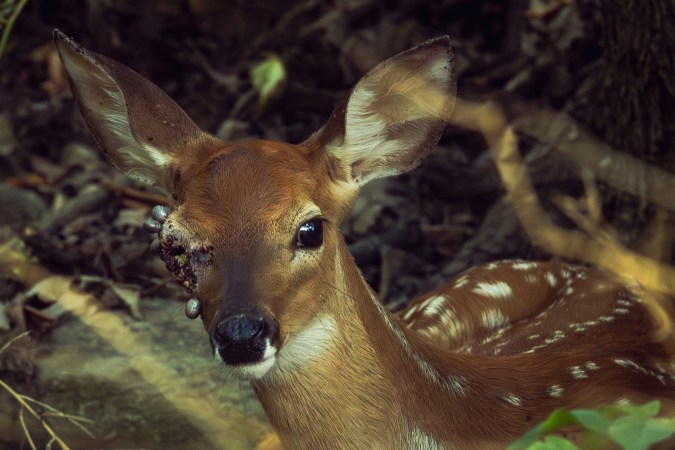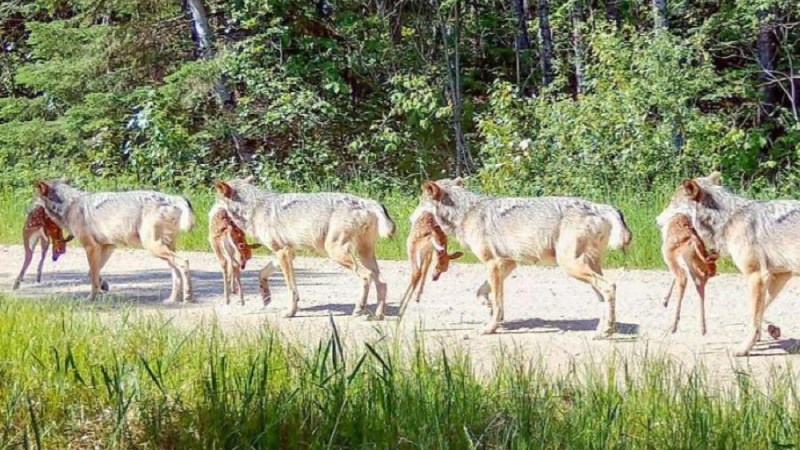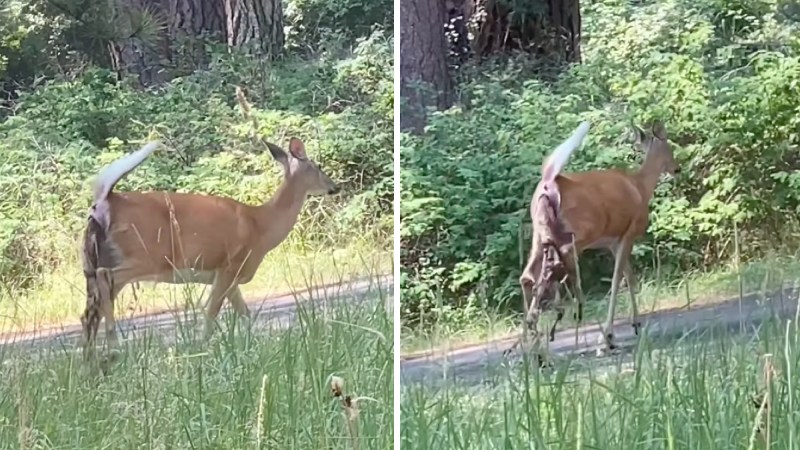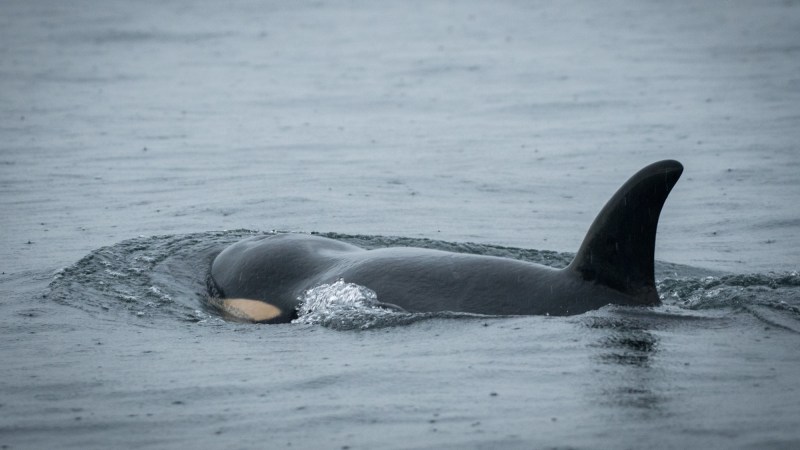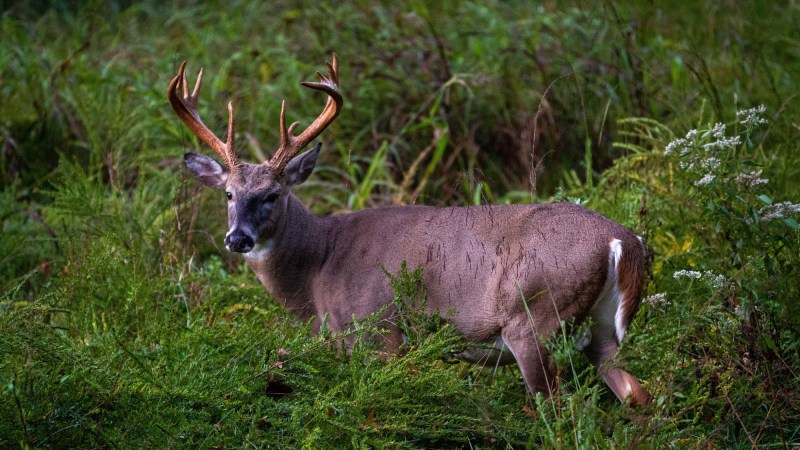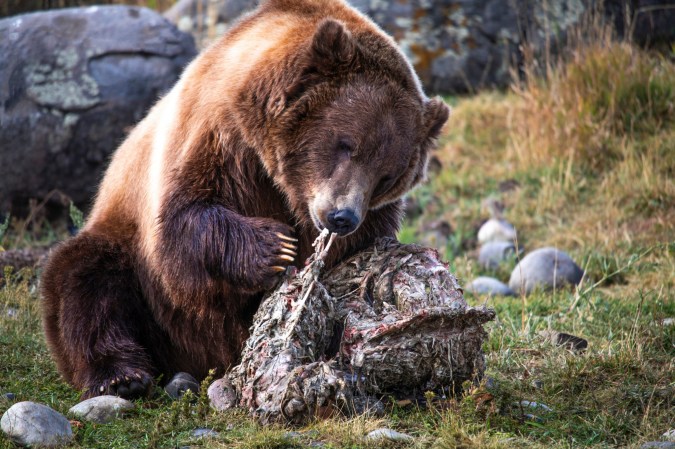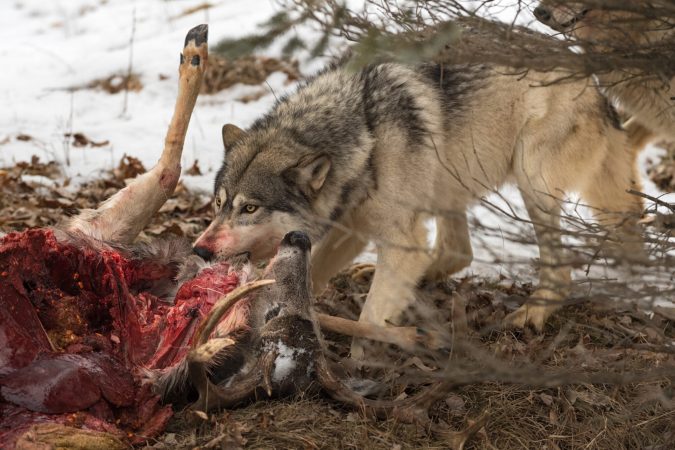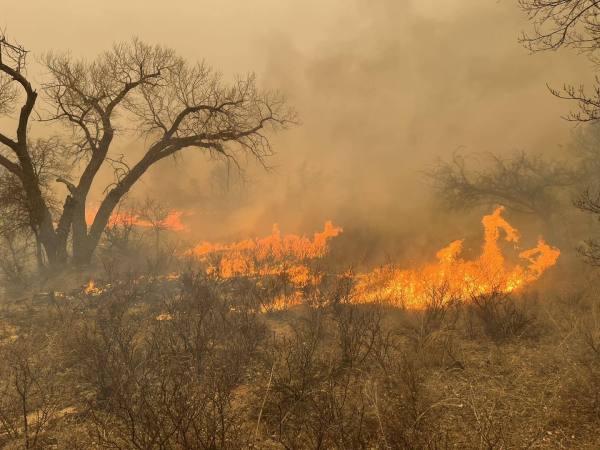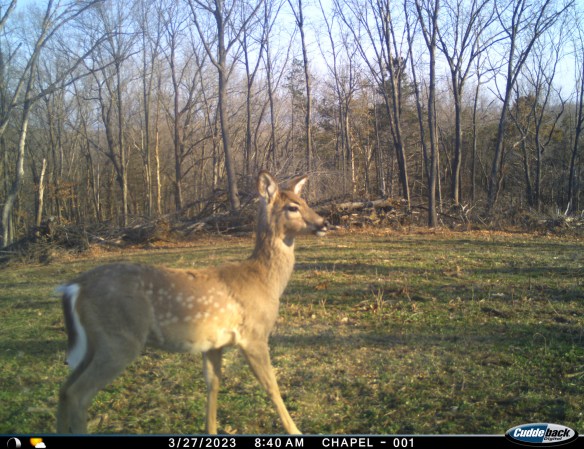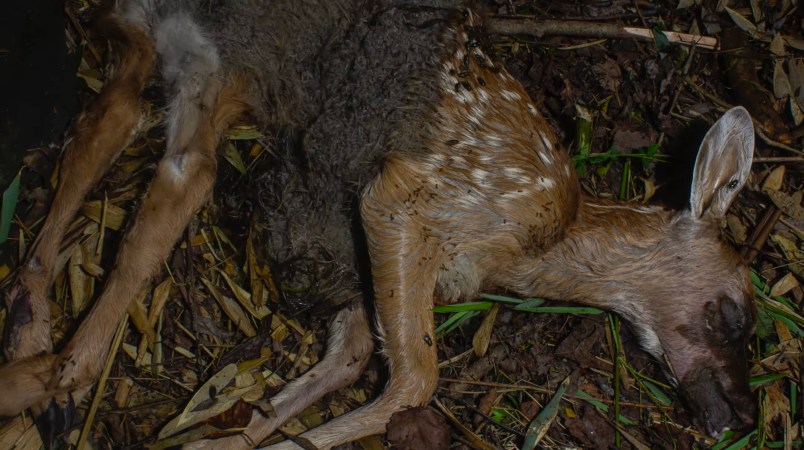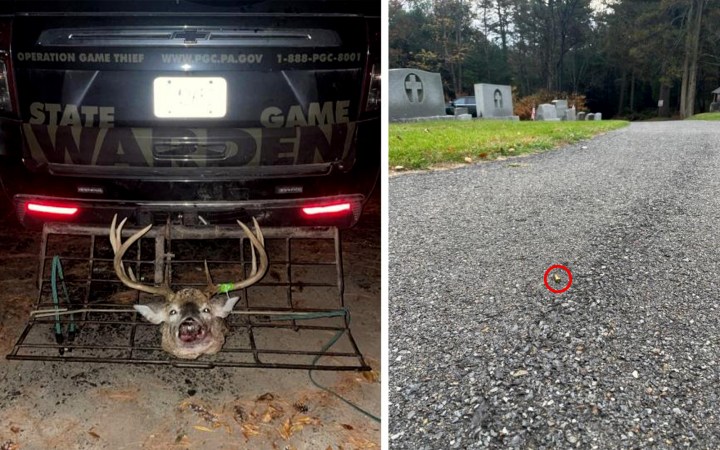A video showing a skunk preying on a bleating whitetail fawn is making the rounds on social media after a South Carolina man recorded the encounter on May 12 and posted the clip on Instagram.
“I’ve never seen anything like it,” Joe Sangl tells Outdoor Life. “We’d just got back from church on Sunday morning on Mother’s Day and heard that yelling and thought, ‘Oh the neighbor must’ve gotten baby goats.’”
That wouldn’t be unusual since Sangl lives and hunts on 11 acres that backs up to about 600 acres of pasture and timber. But when he saw his neighbor walking outside to investigate the noise, he knew something was amiss. The short clip Sangl filmed shows an adult skunk gnawing on the hind leg of a fawn that’s tucked into short cover, just behind a barbed wire fence. The fawn is unable to move but bleats repeatedly, clearly in distress. “No wonder it’s hollering,” says his neighbor off camera, while Sangl tells his 14-year-old son, Keaton, to stay back — concerned the skunk might spook and spray them.
“I walked back there and just couldn’t even believe that skunk is just biting on that poor thing’s back leg,” says Sangl. “I was in a tight spot because I was like, ‘What do I do?’ Because it is nature. ‘Is the skunk rabid? How do I get it off without getting sprayed on Mother’s Day?’”
Sangl recorded just a few seconds of footage before he decided he’d better put his phone down and help the fawn. He grabbed a handful of rocks from his nearby garden and began lobbing them at the ground near the skunk, careful to avoid hitting the deer.
“The fawn tried to get up once, while I was throwing rocks. And the skunk was so heavy relative to the weight of the fawn that it just drug it back down. The way I’m thinking about it, babies don’t really quite know what to do with all their legs, and that skunk is mature and has claws and paws. You could tell he was anchoring his back feet when the fawn was trying to get free. The fawn drug the skunk about six feet and hit that [old] fence and just fell back down with the skunk still chomping on it.”
Finally the skunk let go and the fawn ran past the Sangls a few hundred yards into their hay pasture, which hadn’t been cut yet.
“But the skunk kept wanting to go back after the fawn — the skunk was trying to go through us to get it. It was so odd.”
Neither Sangl nor his son were able to see any broken skin or injury to the fawn when it ran past. And about five hours later, a doe picked her way along the fence right where the fawn had been, so Sangl is hopeful they reunited. The skunk also survived the encounter.
“I chose to leave the fawn alone rather than check it out. I didn’t know what to do with the skunk. I was thinking about trying to terminate the skunk and I didn’t have a pistol or anything on me, so I ran to get it and came out the door with my son hopping around. He was like, ‘Don’t get mad at me but it turned and raised its tail at me three times so I ran away, and it ran under the shed over there.’ I told him, ‘Self preservation was the right choice.’”
Do Skunks Usually Prey on Deer?
Fawns are dropping around the country right now and many won’t make it through the spring and summer due to predation. What’s notable is this attack is being carried out by an uncommon predator. It’s not unheard of for skunks to prey on deer, but it is rare.
“Fawns are unfortunately the potato chips of the forest and everybody eats them,” says Lindsay Thomas Jr., director of communications for the National Deer Association. “And any opportunist that comes along — including a skunk — that can find a fawn too small to escape?” That’s what that skunk is doing.”
Many fawns die from natural causes like rainfall, disease, and vehicle impacts. Predation is also relatively common: Research shows coyotes are the No. 1 predator of whitetail fawns, with black bears and bobcats ranking a distant second and third, respectively.
“Any other predator in these studies doesn’t even amount to a percentage worth mentioning in the bar graph,” says Thomas. That includes small mesopredators like skunks, raccoons, and opossums.
And of course, deer have defenses against common predators this time of year.
“In those early weeks the strategy of survival for the doe and the fawn is to stay apart from each other, except for once, maybe twice a day she’ll come and nurse the fawn,” says Thomas. “The doe not being on the scene helps avoid attracting the attention of visual predators like coyotes, who might then locate the fawn.”
This instinctive behavior can work well (unless there are humans around attempting to “rescue” abandoned fawns), especially if the doe remains within earshot of her young.
“If she hears that distress call of the fawn, she’s going to come in and stomp the fool out of anything like a skunk that’s messing with it,” says Thomas, noting that the doe might have done just that if Sangl and his companions weren’t in the area. “Most of the time a small mesopredator … is a minimal issue in most cases. It rarely happens. But still, those are animals that eat carrion and meat and anything else. They’re opportunists.”
That opportunistic behavior was documented at one of NDA’s Field to Fork events in Missouri in 2022, when a new hunter began to approach his first deer just as a skunk crawled onto the dead doe’s back and dug into the backstraps. In that particular case, the hunters were able to toss branches toward the skunk and scare it off without getting sprayed, just as Sangl did.
His intervention drew a few critical comments on Instagram (“Please do not interfere with nature. That skunk has babies to raise too”) but you’d be hard pressed to find a hunter or habitat manager who could resist doing the same. From a population standpoint, however, sparing one fawn won’t have any impact on the local deer herd (or the local skunks).
“Some number of fawns die every spring in ways we don’t like to see, and if you’re there to witness it, it’s not pretty. But that is how this works. Predators eat prey, prey are eaten by predators … everybody’s eating somebody else,” says Thomas. “There’s no [deer] management directive that says every chance you get, stop fawn predation. Because this is going to happen, you cannot be out there all the time to intervene. What we can do is provide great habitat.”
In other words, if you want to make sure fawns have the best chance of survival, do what you can to increase habitat quality, provide more cover, ensure there’s abundant nutrition for deer for proper herd health and deer densities. (Sangl says there has been “immense deforestation and building” in his area; South Carolina was the fastest growing state by population in 2023, with an increase of 1.7 percent in residents.)
“After that [habitat improvement] the deer take care of themselves,” says Thomas. “Because we provided the best nutrition and cover, the deer population will be okay. They’re a prey animal and some of them are going to die, and that’s okay — [their populations] are built for that. We don’t need to intervene on the individual level. But as a human hunter walking around the woods managing deer, could I sit there and watch a skunk kill a fawn? No, probably not.”
This story was updated on May 24, 2024 to include comment from Joe Sangl.



